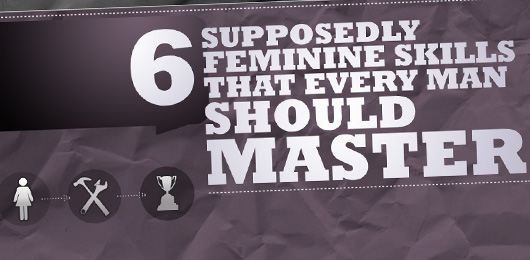
Brad is a university lecturer with a master’s degree in Kinesiology and is a Certified Strength and Conditioning Specialist (CSCS) with the National Strength and Conditioning Association (NSCA). He has competed as a drug-free bodybuilder, is a cancer survivor, and a 21 year veteran of the Air National Guard. Brad has been a Primer contributor since 2011.
If you’re like most who set aside a specific time of day to go to the gym and get your pump on you may have aspirations to build bigger arms, a thicker chest, and a six-pack. You’re most likely also in the market for a leaner physique. Going to the gym and pounding the weights is the best blueprint for building muscle, but what about burning unwanted fat? A strict diet? Endless cardio? Multiple gym sessions?
There might be a better, more convenient way to shed the excess. Enter NEAT.
Non-exercise activity thermogenesis (NEAT) is the energy expended for everything you do minus sleeping, eating, or purposeful exercise. NEAT ranges from taking the stairs, walking to the grocery store, doing household chores, and even fidgeting. It can be standing more at work, doing yard chores, and parking further away from the office so you have to walk more.
It is everything you do other than fueling vital bodily processes and eating food. NEAT is part of a bigger picture called total body energy expenditure. These processes can be broken down as follows:
Basal metabolic rate (BMR) is your basal metabolism accounting for 60-70% of total energy expenditure. These tasks include breathing, blood circulation, heart pumping, brain activity, and other processes during rest. This energy is needed to simply keep you alive. As stated earlier, this does not include any expenditure during eating or exercise.
Diet-induced thermogenesis is the energy your body uses during eating, which includes digestion, absorption, and storage. It accounts for 10-20% of total energy expenditure.
Lastly, physical activity is the final component of energy consumption which comprises 6-10% of total energy cost. It not only accounts for exercise but also for postural maintenance, muscular contraction, as well as non-exercise activity thermogenesis (NEAT).
Why NEAT?
With a measly 6-10% of total energy expenditure is it worth focusing on improving your daily physical activity? Why not just spend more time at the gym? Science can help.
In a study published in the Journal of Obesity Research, several pairs of twins were studied to see if there would be a difference between each participant if they were both on the exact same diet and exercise program for 90 days. One lost 7 pounds while the other, who performed more NEAT throughout each day, lost a whopping 25 pounds! [1]
On a more micro level, but equally as impressive, a paper from the Journal of Clinical Investigation looked at two groups who were fed the same diet and observed over a 24-hour period. The group who simply fidgeted (some of the smallest forms of NEAT) burned an additional 100 to 800 calories [2]. For comparison, a brisk walk for an hour can burn from 200 to 350 calories. If all you do is an hour of moderate cardiovascular exercise, fidgeting has you beat.
Does this mean that scheduled exercise is useless? Are you just spinning your wheels? Not at all. It just means that your planned gym workouts need to be more targeted–more specific to your goals. Save the gym for resistance training to increase muscular size and strength and shorter, higher-intensity cardio sessions for conditioning.
Not only will NEAT burn more calories and subsequently help with fat loss, but it will also have a significant positive impact on other factors such as less risk of metabolic syndrome, decreased risk of cardiovascular events, and less risk of death from all causes [3]. Not a bad deal at all.
The other 23 and how to use NEAT

A dismal 2% of the American population opts to take the stairs. We prefer the elevator, escalator, and any other automated mode of transportation to make our lives… uh better? We like to think modern conveniences should always be chosen over expending any effort or threatening comfort. We feel a constant need to get somewhere with the least amount of effort. But is this attitude killing us softly and slowly?
Your BMR and diet-induced burn are mostly set. You can optimize them by staying in healthy cardiovascular shape and eating a well-balanced diet full of fiber and natural, whole foods. Still, you’ll have the most influence in the physical activity category. This seemingly small 6-10% is where you can induce a major change in your day-to-day calorie expenditure.
The one-hour gym session is great, but what are you doing for the other 23 hours of the day? Okay, take out eight hours of sleep, and you’re left with 15 hours at your disposal. You have the most influence on how you spend this time each day. Will you spend it mostly sitting at a desk? What about watching TV or scrolling your phone? Are you looking for the nearest parking spot at the store so your walk is shorter? Do you take the elevator or escalator when you can? Are you always on the lookout for a chair in a waiting room, airport, or public park?
The bottom line is that you have the power to improve your calorie burn throughout your waking hours.
How do you improve NEAT? Here are a few easy, everyday ways to do just that.
Take the stairs
An easy way to increase NEAT daily is to take the stairs more. Since only 2% of the population takes this route, you’ll be an instant trendsetter. The best way to start is to pace yourself. It’s not a race, so simply skipping the elevator and escalator is a huge change.
Walk when you can
Not every city or town is walkable but walking when and where you can is another easy shift. Whether it’s shopping, golfing, or going for walks in your neighborhood, the more steps the better. Again, this is another activity that should be taken casually, no speed walking is necessary.
Stand more than you sit
Stand more in waiting rooms, adopt a standup desk, conduct standing meetings, and take more standing breaks during the day. Standing activates many supportive muscles from head to toe so you’ll burn more calories without even moving.
Park farther away
Instead of riding around for 10 minutes, choose a parking spot far away from the store and walk. It’s all about increasing your steps. A bonus is that you’ll always find a spot! Oh and don’t forget to return your cart to the corral.

Take a walk around the office
Set a timer every half hour or hour to get up and walk for a few minutes. Get out of your chair and meet with a coworker instead of emailing them. Take the long way to the copier or office kitchen for coffee.
Space out chores
Instead of doing all of your chores on one day, space them out over each day of the week. Vacuum one day, dust the next, straighten up the next and so on. Not only will you get in more activity each day, you won’t feel overwhelmed by doing all of your chores in one day.
Stretch and breathe
Whether you are an office worker or one of the growing number of work-from-home types, not only will you benefit from regularly scheduled walk breaks but you can also add in a short stretch routine. Touch your toes, reach overhead, twist your torso, and do anything else that lengthens your muscles and moves your joints in a large range of motion.
Breathe. Take a screen break, close your eyes, and do some deep, calming breathing. Focus on inhaling and exhaling. Look to this time to renew your energy and focus to be more productive and stave off burnout and frustration. Every move counts.
How diet can affect NEAT
One word of caution if you begin a calorie-reducing diet. When you decrease calories to induce a calorie deficit, your body will tend to slow down. The less energy coming in (food) the less energy it wants to expend so it will try to conserve energy as a response. You may become a bit tired and want to sit more. Stay aware of this response. At first, this may seem frustrating and a bit self-sabotaging, but hang in there. In a week or two, as you increase your NEAT activity you will become more adapted to this new energy balance. You’ll start to tap into your fat stores for energy and reap the incredible benefits of moving more.
In closing
NEAT isn’t some magic bullet or trade secret. It does, however, take conscious effort and consistency, but the benefits of utilizing your regular day to your advantage without any additional trips to the gym are to be taken advantage of. Whether you walk more at work, stand while meeting, or even fidget more, the advantages shouldn’t be overlooked. See you around the water cooler!
References:
- Bouchard C, Tremblay A, Després JP, Thériault G, Nadeau A, Lupien PJ, Moorjani S, Prudhomme D, Fournier G. The response to exercise with constant energy intake in identical twins. Obes Res. 1994 Sep;2(5):400-10. doi: 10.1002/j.1550-8528.1994.tb00087.x. PMID: 16358397.
- Ravussin E, Lillioja S, Anderson TE, Christin L, Bogardus C. Determinants of 24-hour energy expenditure in man. Methods and results using a respiratory chamber. J Clin Invest. 1986 Dec;78(6):1568-78. doi: 10.1172/JCI112749. PMID: 3782471; PMCID: PMC423919.
- https://www.mayoclinicproceedings.org/article/S0025-6196(15)00123-8/fulltext
















